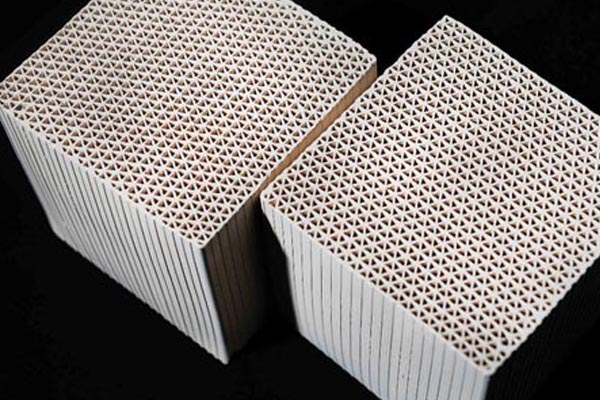
The main material of honeycomb zeolite adsorbent is natural zeolite. The manufacturer of zeolite is composed of silica Inorganic microporous material composed of al_2o_3 and alkaline metal or alkaline earth metal, with inner pore volume accounting for 40-50% of the total volume and specific surface area of 100-500 m2/g, has the characteristics of high temperature resistance, non flammability, good thermal stability and hydrothermal stability. It is an efficient molecular sieve carrier with good adsorption performance, no secondary pollution, and can be regenerated at high temperature. Compared with Honeycomb activated carbon Its performance is about 25% of its efficiency, but it is widely used in the fields of adsorption, separation, catalysis and environment due to its high temperature resistance and difficult ignition. It is more suitable for the treatment of organic waste gas with large air volume and low concentration. Honeycomb zeolite molecular sieve , Zeolite honeycomb molecular sieve , Honeycomb zeolite molecular sieve Jiayuan, Jingdezhen Activated carbon limited company
Zeolite adsorbent products include microporous adsorbent and mesoporous adsorbent. Honeycomb zeolite molecular sieve , honeycomb Zeolite molecular sieve , zeolite honeycomb molecular sieve
(1) Microporous molecular sieves with molecular apertures below 2 nm, mesoporous molecular sieves with molecular apertures above 50 nm (macroporous molecular sieves with molecular apertures above 50 nm), mesoporous molecular sieves have high specific surface area, regular and orderly pore structure, narrow pore size distribution, continuous and adjustable pore size and other characteristics, which make it difficult to complete the adsorption and separation of macromolecules in many microporous molecular sieves, And catalytic reaction.
(2) Therefore, molecular sieve materials with different properties and pore sizes shall be configured according to the different components of organic waste gas during selection, so as to achieve targeted organic waste gas treatment, meet the design requirements and emission standards.
